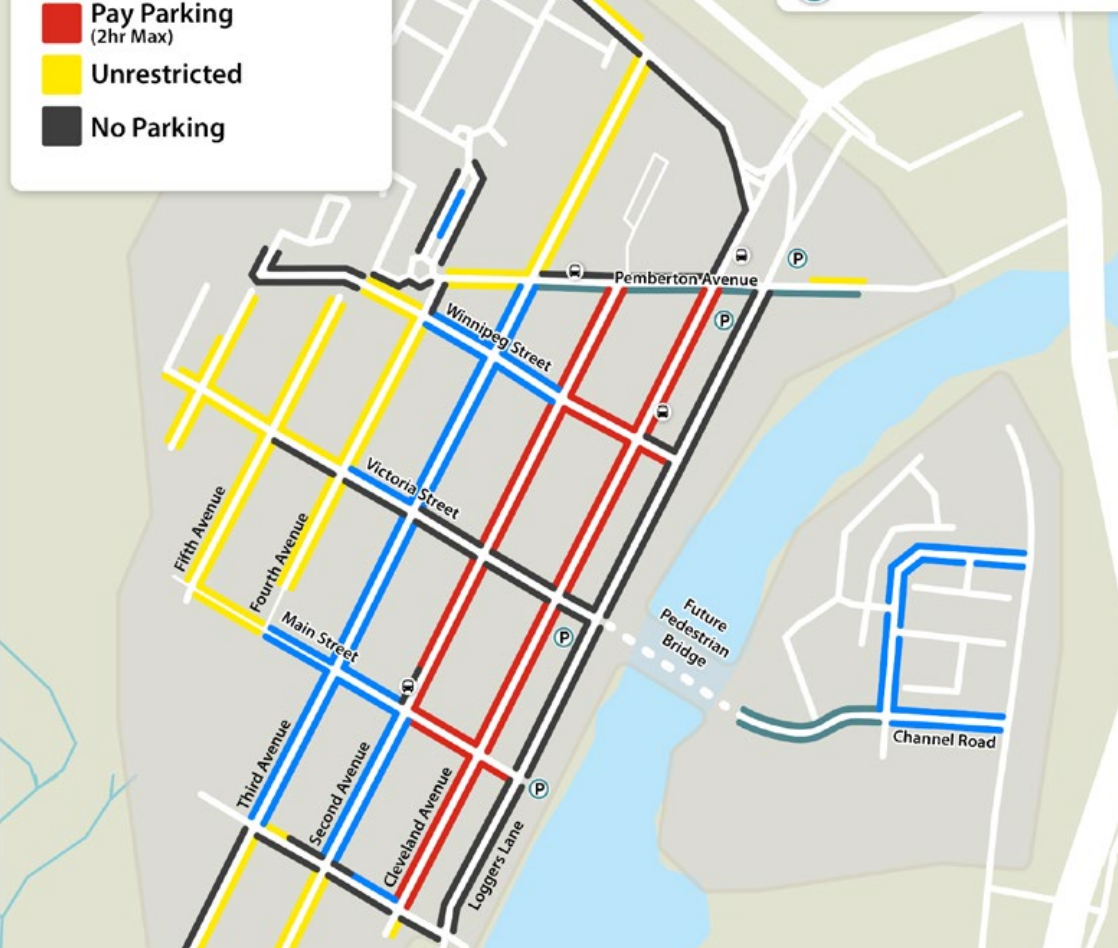
The District of Squamish will present two options for paid parking to the council in an upcoming Committee of the Whole meeting on Tuesday. Staff supports the first option.
Option A: Paid parking project at select tourism locations by summer 2025. Downtown paid parking would be delayed by 2027.
Option B: Delay the tourism location project and introduce paid parking downtown by summer 2026.
“Paid parking is expected to improve parking turnover, reduce congestion, and encourage alternative travel modes (walking, biking, transit),” the staff said in the report to the council. Staff recommended Option A, allowing them to test the process. The pilot proposal would allow staff to gather data and refine the process before paid parking is expanded to the Downtown Squamish core.
If the council doesn’t agree with this recommendation, they could ask staff to introduce paid parking on Cleveland Avenue and Second Avenue by 2026.
The District of Squamish is seeking public input as it develops a plan to manage Downtown and tourism-based parking. The community is invited to provide feedback and express individual parking needs and challenges that will help to inform the development of a Parking Management Plan. The report summarizing public input, draft recommendations, and next steps will be presented to Council in early 2025.
“The community has asked us to take action on parking management, and our challenge is to create a plan to manage increasing demand that considers many different interests and needs,” says District of Squamish Mayor Armand Hurford. “This phase of the project is about receiving input from the community to help shape a plan that will meet those needs.




Ihor Zalubniak says
Alternate travel modes includes not going downtown to shop or dine. This idea is to the detriment of individual shop owners on Cleveland Ave. Shops and businesses that depend on in and out purchasing. This is an idea, based perhaps in the notion that people will ride in inclement weather or have the extra hour to spend on a bus plus the additional time/ability to walk to their homes with their purchases. Sorry, but this idea lacks merit.
John Harvey says
Agreed
Rajko Puzic says
Elderly and other less mobile people need a car to bring them to shops doctor’s appointments, mothers with small children. We moved to Squamish to avoid hassle of other communities such as Whistler where you have to pay parking. The last thing people on fixed income need is paid parking. It is not going to do anything but put more money to city council.
Donald John Lawton says
I already “shop where I park” and have frequently turned arround and gone to other locations to shop when I have not found convenient parking to shop on Cleavland or other streets in the downtown core. Parking is a problem and is only agrivated by the willingness of the developement department to allow developers to whittle away the parking requirements for new residential buildings to less than 1 1/2 parking slots per apartment when we all know that most apartments are occupied by people who have at least two vehicles that need parking not to mention the other things that prevent cars or trucks from being parked in the single car garage or slot provided. Sensible parking accepts the reality of our current lifestyle. I know a growing number of people who “shop where they park”.
George Wilson says
A suggestion would be to have both Cleveland and 2nd Ave one way streets. You could then allow angle parking on both. Makes sense to me.
Brian MOORHEAD says
Paid parking at Smoke Bluffs will result in unmanageable illeggal parking at the Hospital Hill neighborhood
Charging tourists to pay at the Adventure Centre makes no sense
Lucas says
I agree with Ihor’s comment, that “alternative travel modes” city staff is attempting to force on the public is missing the most likely option for me: avoid spending money in Squamish. No easy, accessible, free parking = no spending of money by me. Bye bye, tourist dollars.
Dan says
When you stop thinking the DOS is making decisions to help people, and understand that they have a predetermined agenda to make it harder to have a vehicle and move freely around town, their decisions start to make a lot more sense. If you watch the meetings, it’s not about how to make life better for people. It’s all about “how can we make the public eat what we’re feeding them”.